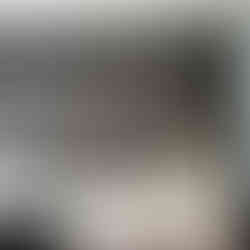GRID | Design Philipp Marcks
- Whisperwool

- 2. März 2021
- 2 Min. Lesezeit
Aktualisiert: 15. Apr.

In Grid, the present moment condenses into a network that spins red threads and brings a tense balance to the turmoil of life in a society that is moving closer together.
Philipp Marcks is an Austrian-based 3D designer and artist with a passion for procedural structures and cell-based systems.
Inspired by the Golden Ratio and Voronoi mathematics, he originally created a visualisation to demonstrate the versatility of possible forms that could be transposed using the Whisperwool material. This was the basis for the development of Grid:
Order within Chaos
In a Voronoi diagram, certain points are defined on a surface or in space. Through the targeted positioning of the centres, also known as Thiessen polygons, surfaces or bodies can be designed both creatively and statically. The Voronoi regions arise radially around the randomly or purposefully scattered points and break down the space into patterns that follow a Euclidean metric.
In the case of the Hallway design (see image above), Philipp Marcks, fascinated by the order that emerges from chaos, "purposefully randomly" "threw" dots onto the 3d curved surface to create Voronoi architecture. At the edges of the surfaces, he deliberately increased the density of the centres to reinforce the impression of three-dimensional curvature.
The surfaces have resulted and been calculated by this logic, also called Dirichlet decomposition. "The cells have grown around the core." (Philipp Marcks) In programs like Grasshopper or Maya, the points can be placed over 3d curved surfaces and structures.
Computer-aided manufacturing
"What fascinates me as a product developer at Tante Lotte is the possibility to cut even three-dimensionally curved surfaces into smaller surfaces using Voronoi Design. The cutting plans can be sent directly from the computer to the CAD cutting machines. No geometry data is lost, sources of error can be reduced, cuts optimised and thus order processing improved and accelerated overall." (Horst Philipp)
DESSIN
Grid is a repeat, also called a dessin, a repeating pattern based on Voronoi diagrams. Grid can be offset in quarter steps and twisted in 90 degree steps. This results in harmony in the repetition on the one hand and tension on the other due to the patterns being twisted and offset out of order.
Our acoustic panels Grid made of sheep's wool are available in various colours and mounting options.
Grid are highly sound-absorbent (αw: up to 0.9, absorber class A). Even a single acoustic element noticeably improves the room acoustics and the room climate. The panels are also suitable as noticeboards.
Receive advice




















Kommentare